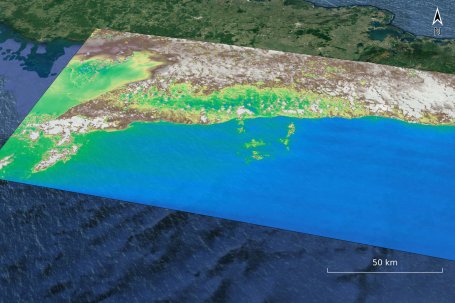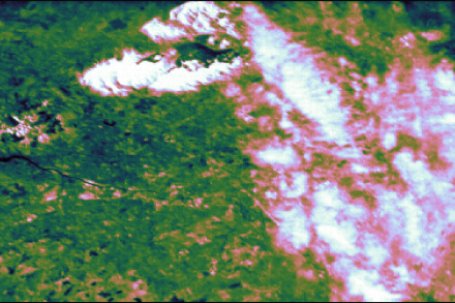HyperScout space camera successfully captures first images- unique achievement on a global level
HyperScout, the first miniaturized hyperspectral camera in space, has captured its first images. Developed by an international consortium led by Dutch company cosine, HyperScout was launched into space on 2 February 2018. The images are the first Earth observation images of their kind captured by an instrument onboard a nanosatellite.
HyperScout was launched into space from the Jiuquan Satellite Launch Center in China on 2 February 2018, aboard the European Space Agency's GomX-4B nanosatellite. Dutch company cosine, in cooperation with its partners, was the first to develop a miniaturized hyperspectral camera small enough to be launched on a nanosatellite of only 30x20x10 cm.
Marco Beijersbergen, founder and managing director of cosine, comments: ''These are spectacular results: the first spectral images of Earth captured by a miniaturized hyperspectral camera onboard a nanosatellite.''
HyperScout or private jet?
So far, Earth observation images of this nature have been captured by full-sized satellites, which easily cost more than an Airbus A380. A miniaturized instrument like HyperScout on a nanosatellite is less accurate, but can be launched into space for the price of a Cessna. Even a constellation of HyperScouts, increasing the frequency of passes to twice a day, in stead of twice a week, would cost far less than a typical full-sized satellite. This greatly increases the potential applications of this technology. Space has never been so close to Earth.
Constellations and applications
HyperScout is designed for large constellations, but can also be used on a single satellite. The more HyperScouts in orbit, the less time in between passes and the more frequent the updates of the targeted area. HyperScout can be used for crop water management, fire hazard monitoring, flood detection, change detection of land use, as well as algae and vegetation monitoring.
Cuba and Scotland
The first images were taken at pre-scheduled times, resulting in two random locations: Scotland and Cuba. HyperScout is able to take hyperspectral images, with a filter which separates the light into 45 wavelengths, each corresponding to a different color of the rainbow. This means a great deal of information can be obtained from these images. In comparison: a regular camera separates the light into only 3 colors: red, green and blue.
These first images have demonstrated that HyperScout is in working order. This is welcome news for clients of cosine, interested in launching their own HyperScout into space. More images will follow in a few weeks time, hopefully including the Netherlands, enabling further analysis.
Partners
HyperScout was developed by cosine with consortium partners S&T, TU Delft, VDL and VITO. The development and launch of the first HyperScout was funded through the ESA GSTP program with contributions from the Dutch, Belgian and Norwegian national space organizations: Netherlands Space Office, BELSPO and Norsk Romsenter.


